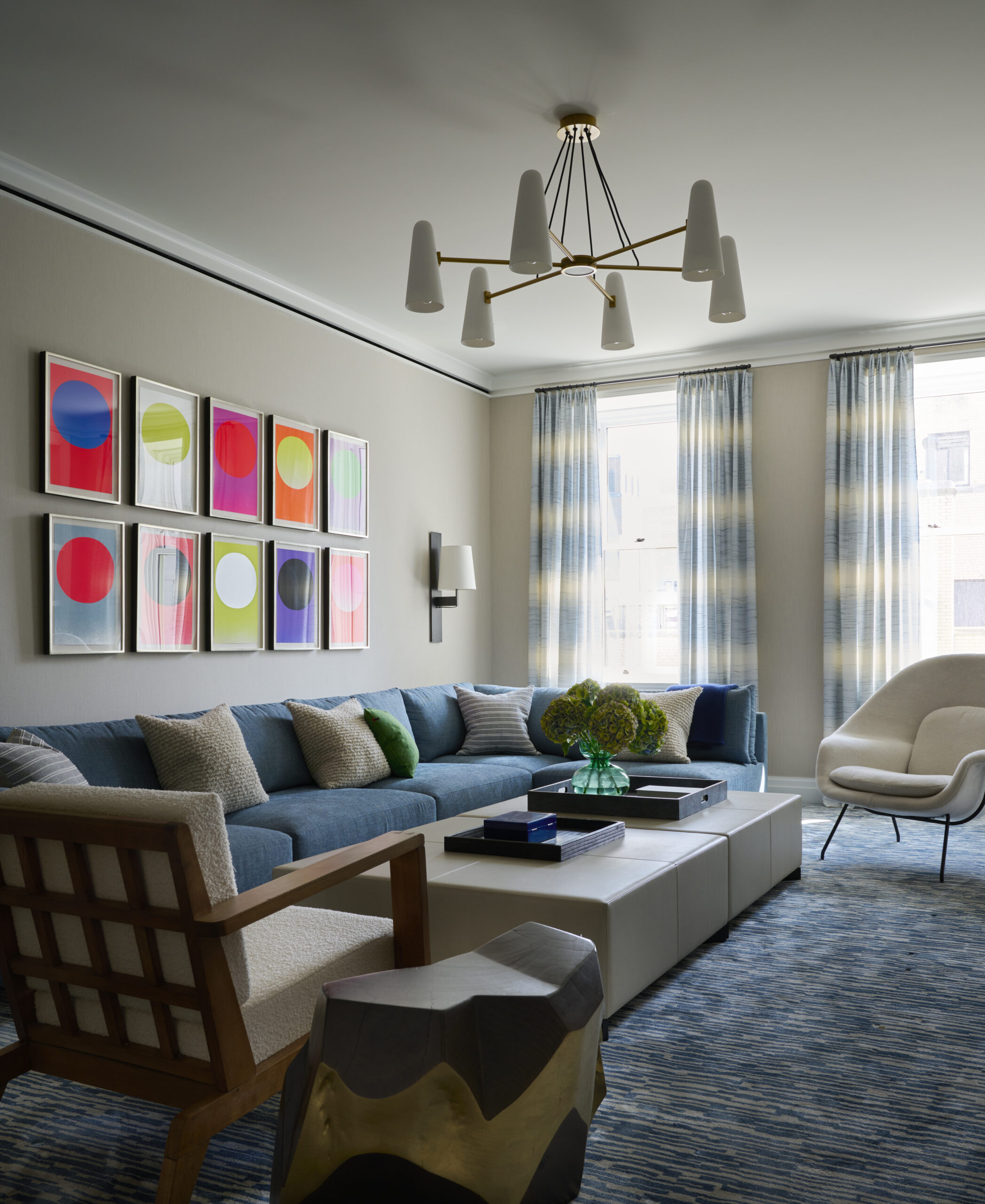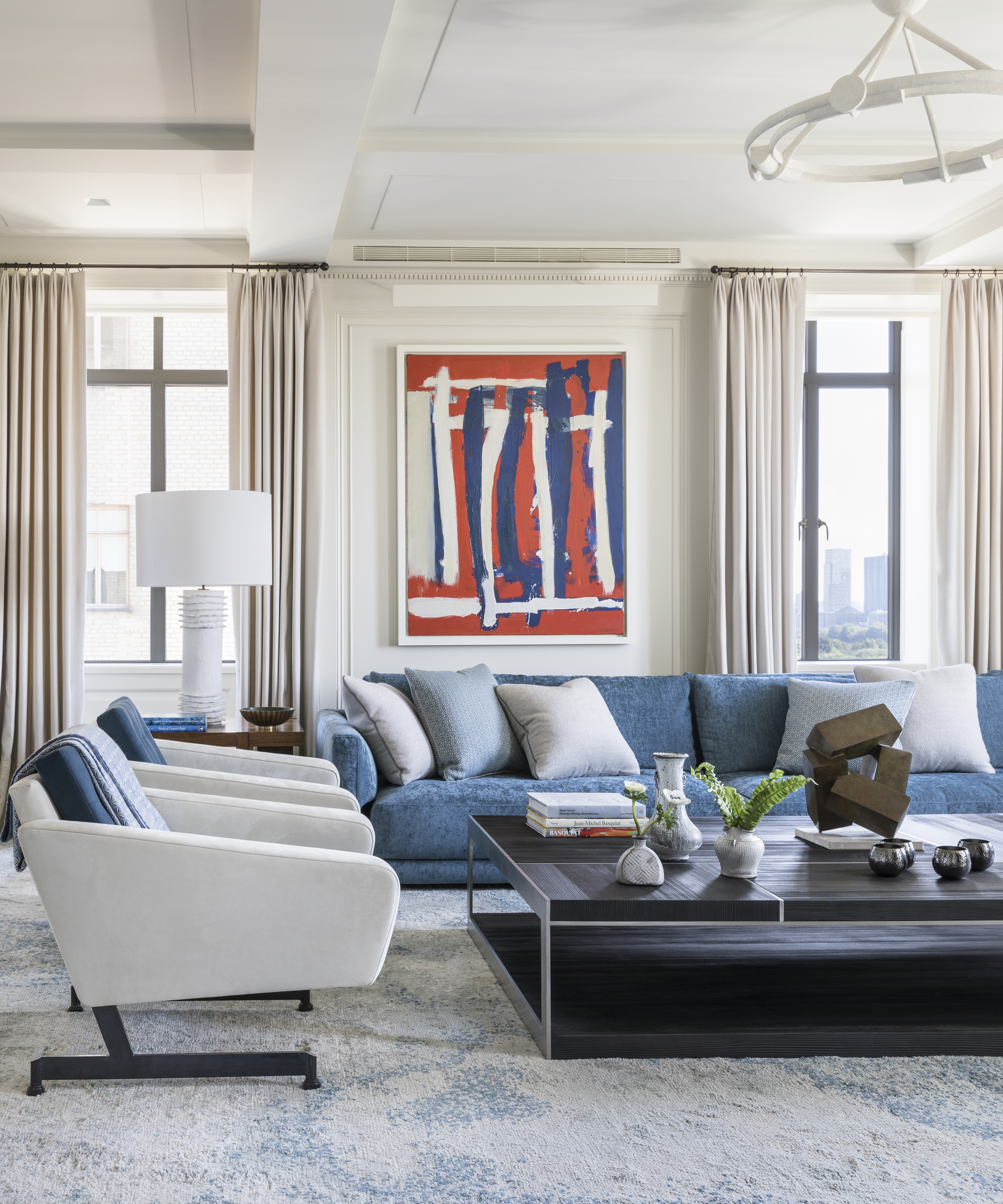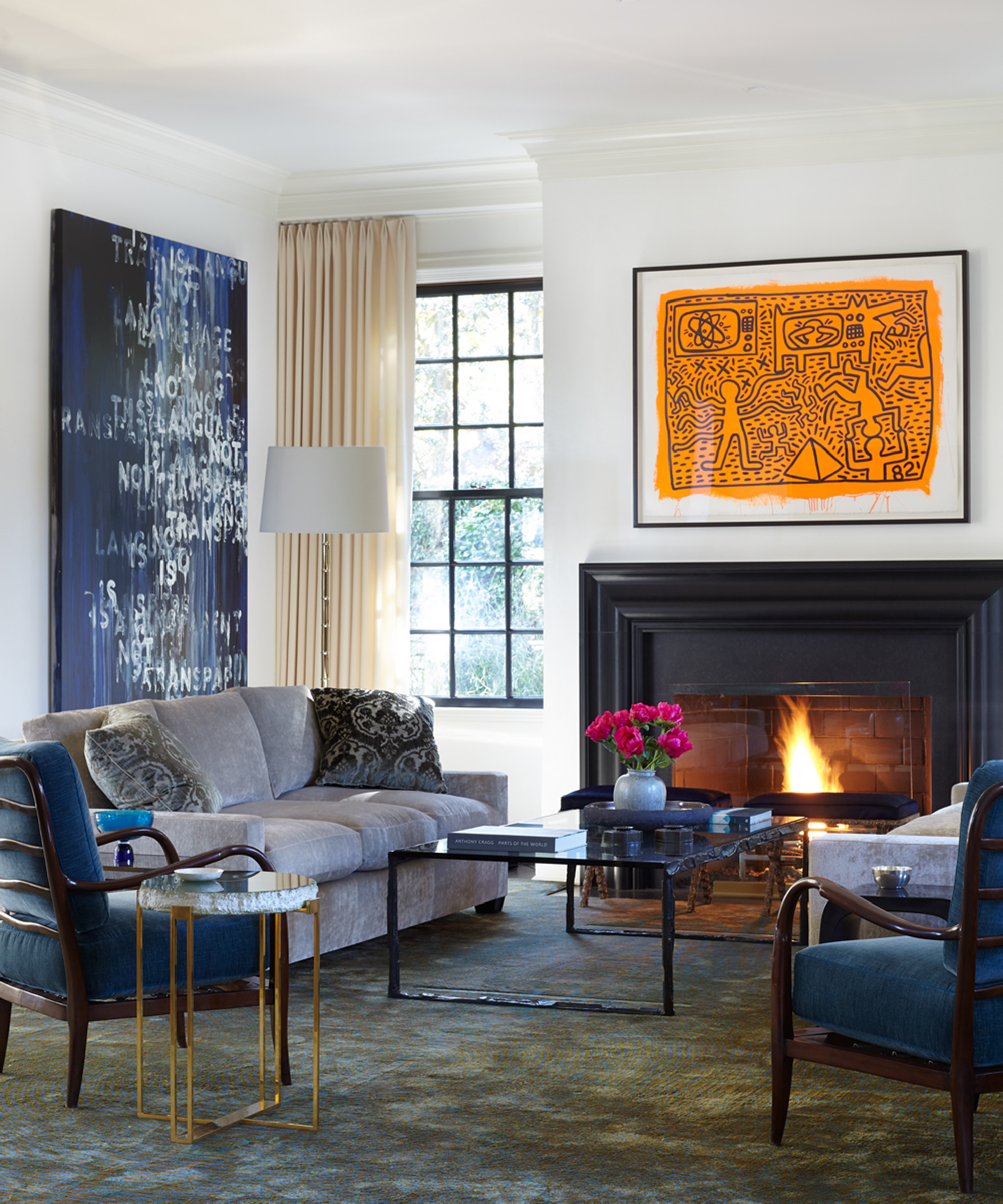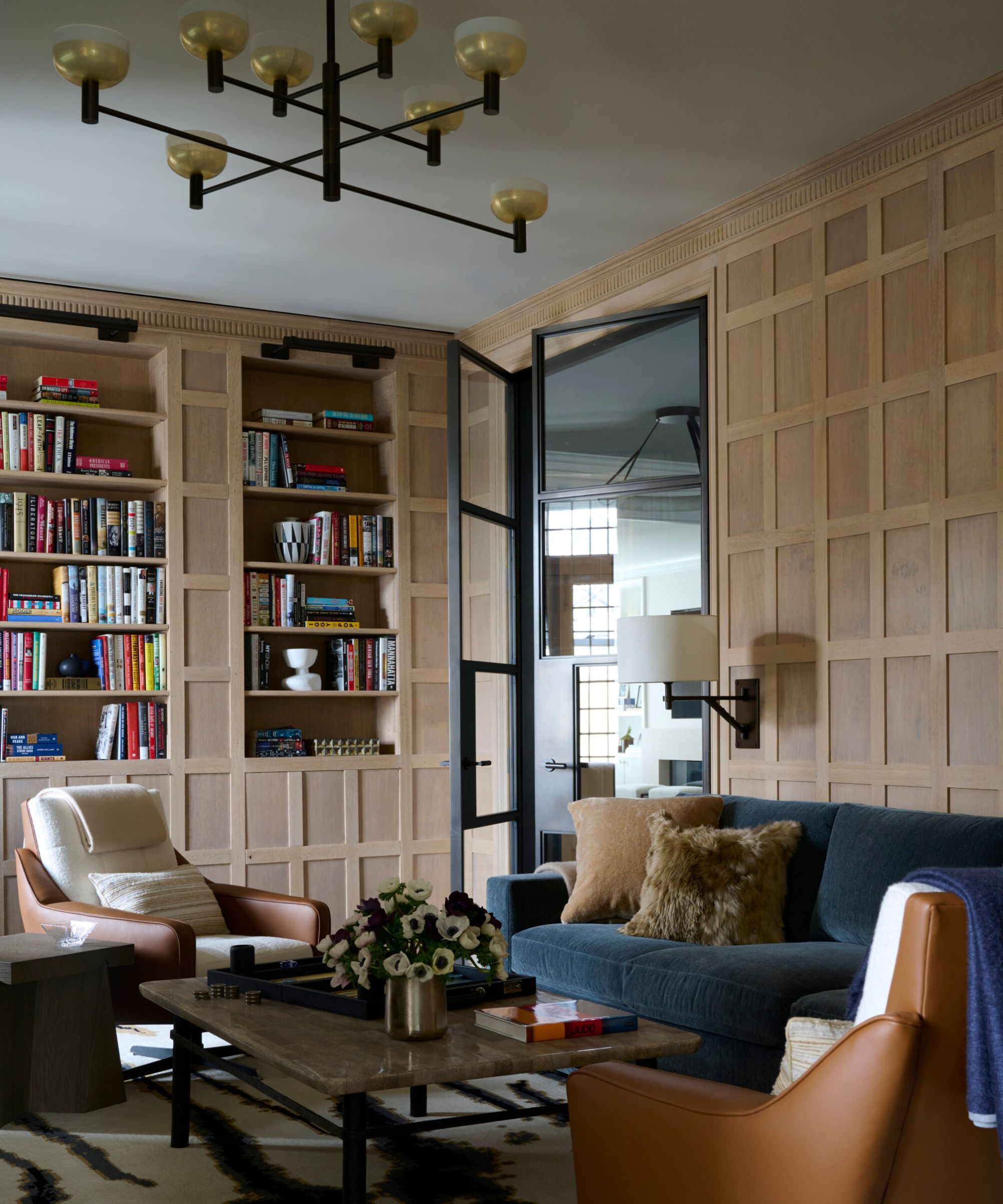Victoria Hagan's 7 Rules for Perfecting Her New American Classic Look
Designer Victoria Hagan's style is one of the most influential aesthetics in modern decor, and these are her seven rules for putting balanced and airy rooms together

Few designers capture the essence of classic American style quite like Victoria Hagan. For more than three decades, the award-winning New York–based interior designer has been celebrated for a look that feels both timeless and completely effortless – airy spaces, graceful proportions, and a serene palette that balances sophistication with ease. Her work spans grand coastal homes, modern city apartments, and historic estates, all unified by a distinctive sense of restraint and refinement.
In our recent Layered Lives interview with Victoria, she talked about what she calls her 'new American classic' look – polished but never precious, luxurious yet deeply liveable. Furniture is sculptural but comfortable, materials are natural and inviting, and every room has a thoughtful sense of calm. And here, in her own words, she explains the key rules she always abides by when putting spaces together, imbuing them with elegance, longevity, and soul.

Victoria Hagan has pioneered a look that sets the tone for how many of us decorate today. She creates spaces that mix eras, colors, and textures – yet all have room to breathe and are deeply functional.
‘I design homes for the way people want to live, and create rooms specifically for how they’re going to be used,’ she says. Her approach – pairs of chairs, oversized rugs, well-proportioned pieces, and a palette that often features marine blues, grays, and whites – has come to define her influential aesthetic. And these are her rules for getting it right.
1. Ensure You Have Balance

I’m drawn to balance in interior design, and every room needs to be balanced. This can come from the colors used or the proportion of the pieces you've chosen, but it also always needs to include the right balance between furniture and flow.
For example, one of the first things I'll do in any project is sit in every single chair, and insist that the people on site with me sit in the chairs surrounding me. I'll pretend we're all having dinner at the table, or a coffee in the living room, and then I'll get up to make sure there is enough space to walk around each person while they're still sitting. Sometimes, taking half an inch off the seat can make all the difference, giving you that extra bit of width to move behind it. That balance is key to a successful room.
2. Abide by the 3-Second Color Rule

When picking colors for a scheme, I have one very clear rule. I'll show my clients various swatches, and if they pause on any of them for longer than three seconds, then it's a no. This is a method anyone can try. If you don't love something instantly (or within three seconds), it's a no.
Design expertise in your inbox – from inspiring decorating ideas and beautiful celebrity homes to practical gardening advice and shopping round-ups.
And don't expect to get all your colors sorted in one go. Load up a table with swatches and do an edit, then come back a day or two later with more swatches and go again. The more comfortable you get with the process, the more times you do it, the more refined the overall scheme will be.
3. Rugs Must Be Oversized

When considering the best rug size, I always recommend it should be almost as large as the room that it's going in – certainly big enough for all the furniture to sit on it. I don't like furniture when it's half on and half off the rug – this makes the scale of the whole space seem off.
How large rugs work is by unifying the space – bringing everything together in one area. They also make the overall space seem more relaxed and with a level of elegance that just feels good.
4. You Need to Be Adaptable

Art is more than a finishing touch – often it's the most important ingredient when it comes to piecing a refined room together.
But what I've learned is that while you can map it all out before a project, deciding which pieces of art go where, you have to be flexible when it comes to the actual installation. So many times I've put the art where I planned it would go and instead realized it had more power on an adjoining wall, or next to a different piece of art.
Design is about being adaptable, and having the confidence to change your mind. It's only when you allow for this that your vision can truly be realized.
5. Allow for Contrast

Proportion and scale in interior design are everything. The rightness of a space comes from when you have the scale and proportion of every element exactly right.
Someone once told me that the human body is perfectly proportioned, designed so that if you lie on your side, your knees fit together perfectly. You need to replicate this sense of exactness in your furniture choices. A wing chair, that is much taller than your average club chair, will cocoon a person and make them feel comfortable, but then you need to focus on the proportion of what is around it – too many pieces that size will block out the light from the windows, or break the sight lines into the adjoining room.
So, think about proportion as much as we already do about materiality and color, and ensure that there are some larger pieces contrasted by some smaller ones. This will help you understand the space and its volume.
6. Plan Precise Heights

Different people have different senses of what comfort means to them. I love a sofa that you can sink into, but others might prefer something more straight-backed or a little higher off the ground so that it’s easier to get up from.
A key idea I use to design the perfect space for someone is to gauge whether they like to ‘sit soft’ or not, and then choose the ideal furniture height for them – every other piece needs to correspond exactly so you’re not reaching down too low for the coffee table or craning your neck to see the TV.
Most people like to sit about 16 or 17 inches off the ground, but some might prefer as high as 19. Understanding your comfort levels – and the height of the furniture that supports them – is the knowledge that will help you create magic in your design.
7. Don't Discount Negative Space

Lastly, proportion can’t exist without a focus on negative space – the air that flows between the furniture and objects in a room. I was working on a large living room in Washington and was struck by just how big it was. I needed to make sure the scale was right, but it was challenging.
I quickly learned that it was about lengthening pieces like the tables and sofas rather than increasing their height. Nobody wants a room where everything feels oversized – you don’t grow a foot just because the room is large! What I needed was to let the negative space – the area above and around the furniture – sing, rather than cram it with big pieces.
To create the New American Classic at home, the trick is for every item to feel considered – based on how comfortable it is, whether it’s the right height, and whether you have enough space to move around it. On top of those key factors, you can layer decorative pieces in palettes of blues, grays, whites, and creams, making sure there’s still plenty of air so rooms never feel stuffy or overfilled.
This look that Victoria pioneered is the cornerstone of modern design – and it continues to inform how many decorators and designers put rooms together today.
Pip Rich is an interiors journalist and editor with 20 years' experience, having written for all of the UK's biggest titles. Most recently, he was the Global Editor in Chief of our sister brand, Livingetc, where he now continues in a consulting role as Executive Editor. Before that, he was acting editor of Homes & Gardens, and has held staff positions at Sunday Times Style, ELLE Decoration, Red and Grazia. He has written three books – his most recent, A New Leaf, looked at the homes of architects who had decorated with house plants. Over his career, he has interviewed pretty much every interior designer working today, soaking up their knowledge and wisdom so as to become an expert himself.
You must confirm your public display name before commenting
Please logout and then login again, you will then be prompted to enter your display name.

